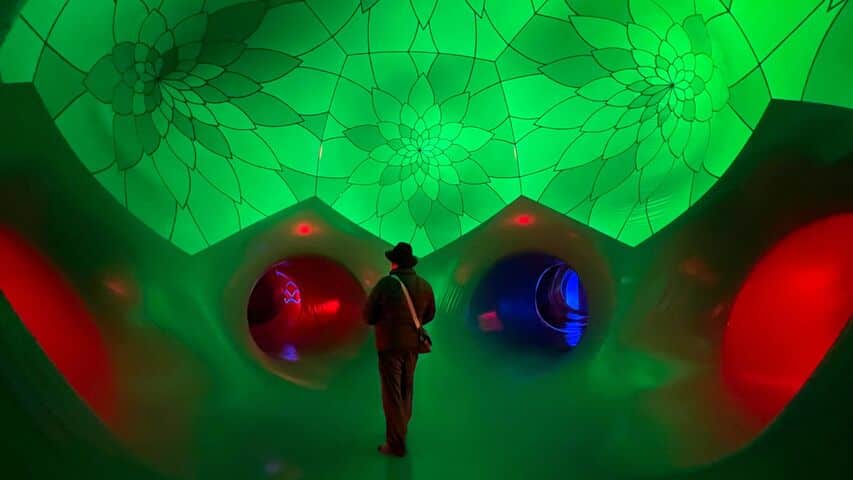Barcelona, the city known for its vibrant culture and innovative architecture, has an event that every winter lights up its streets and transforms its urban landscape into an unforgettable visual spectacle. The Llum BCN festival is a gathering that fuses technology, art and creativity to offer a unique sensory experience. With its epicenter in the Poblenou neighborhood, this international event highlights not only the creativity of local artists, but also talents from around the world.
 The origin of a light show
The origin of a light show
The Llum BCN festival was born with the purpose of turning winter nights into a canvas where lights dance, transforming the environment into something almost magical. Every year, it takes place during a weekend in February, attracting both locals and tourists. The most remarkable thing about this festival is how the installations interact with the architectural environment of the city, highlighting iconic structures and hidden corners of Poblenou.
The essence of the festival lies in exploring the potential of light art, using LED lights, neon and 3D projections to completely transform space. Through light, the artists challenge daytime perceptions and invite viewers to see the city from a whole new perspective.
A platform for innovation
One of the most impressive aspects of LlUB BCN is its commitment to innovation. Not only does it focus on performance, but it also serves as a platform for artists to experiment with new technologies and creative methods. This avant-garde approach attracts creators from different corners of the world, who see the festival as an opportunity to showcase their latest works while absorbing inspiration from the works of their peers.
In addition, this event collaborates closely with academics and students from prestigious art and design institutions in Barcelona, who often showcase their projects at the festival. This eclectic mix of emerging talent and veterans creates an environment of constant collaboration and exchange, ensuring that Llum BCN evolves and surprises year after year.
Poblenou: the vibrant canvas of the festival
Poblenou, a neighborhood that was once the industrial heart of Barcelona, has undergone an impressive renovation. Today, it is a bastion of creativity and innovation, making it the perfect backdrop for Llum BCN. Its vast open spaces, combined with industrial architecture, provide the ideal setting for light installations that demand interaction and movement.
Walking through Poblenou during the festival is like wandering through an open-air art gallery. Every corner can surprise with a new installation, from projections that transform entire buildings to lights that respond to human movement. This turns a simple evening stroll into an experience of constant discovery.
The cultural and social impact of Llum BCN
Beyond simply being a visual spectacle, Llum BCN has a significant cultural and social impact. Attracting thousands of visitors to the city contributes significantly to the local economy, especially in a traditionally quieter period for tourism. In addition, the event fosters a sense of community and pride among the residents of Poblenou and the rest of Barcelona.
Culturally, the festival encourages dialogue about the use of public space and the relationship between technology and art. It also raises questions about sustainability in art and how light installations can be environmentally friendly. These discussions are essential in an era where environmental awareness is becoming increasingly crucial.
A brilliantly secured future
The future of Llum BCN looks as bright as the lights that make it up. With each edition, the festival not only raises the bar for what can be achieved with light art, but also challenges its participants and audience to expand their imagination. As new artists join the event and old friends return, Llum BCN can only grow in diversity and innovation.
Whoever is lucky enough to experience Llum BCN will take away an indelible memory. A festival that not only illuminates streets and buildings, but also hearts and minds, demonstrating that the power of light can be much deeper than what is perceived with the naked eye.


 The origin of a light show
The origin of a light show
